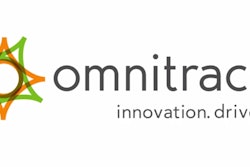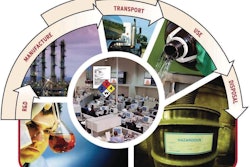
In 2012, economic uncertainty will continue to play out in fleet supply chain strategies. Unfortunately, the same economic forces that have led to new innovations and technical advancements have also helped create a siloed and scattered landscape for upfitting. As suppliers have sought to improve their own products, services and profits, they have inadvertently created a more splintered supply chain that has added complexity and potential costs down the line. With fleet budgets under continued pressure, fleets will seek to counter those forces with greater supply chain visibility and customized elements that must work harder to prove they reduce costs in the long run.
Customization calling
Over the last number of years, customization has come under intense scrutiny. Many fleet managers are approving only those elements that will impact safety, utility or add longer life to their vehicles. For small trucks, upfits will include the addition of equipment storage, racks and safety lights. Larger truck upfits could include more complex safety support equipment for lifting or loading and onboard mobile computer platforms.
While the needs of each fleet are unique, some customization requests are not necessary. Fleet standardization or bailment pools can help eliminate these unnecessary features. In 2011, ARI saw an increase in bailment pools, specifically among larger clients with consistent ordering needs throughout the year. The alternative has helped speed the supply chain timeline while decreasing costs.
But as with any business decision, there are positives and negatives. Upfitter bailments give fleets an opportunity to get standard specifications without any exposure on carrying costs. But they also limit client specifications and inventory control. While client-specific bailments provide broader specification capabilities and order control, there is a greater financial obligation after the 90-day marker.
Yet, even with positive aspects, these custom solutions do add elements of cost and time pressure—ones that are changing the supply chain timeline. To combat this, many fleet owners in 2012 will continue to turn to truck fleet management services to help coordinate the many details and deadlines of upfitting. A turn-key management program will help target what kind of upgrades the fleet should have and manage the process from specs through delivery.
Technology tools
Another way to increase the efficiency of fleet customization and delivery is through technology. The more transparent the supply chain is to the fleet managers the smarter the decisions one can make on selection, timing and vendors. Radio Frequency Identification (RFID) tags and “smart” devices can provide managers with a clearer picture of the long and winding customization process. A vehicle equipped with a radio tag allows the manager to track and optimize movement of all materials while reducing risks, managing complexity and reducing costs. In 2012, ARI predicts an increase in the use of these tracking technologies.
Analytics are another key component to a smarter, more efficient supply chain process. In 2011, ARI saw a significant increase in analytics demand. This technology provides fleet managers with a complete picture of the vast amounts of information and data for their fleets. Advanced analytics, simulation and modeling tools arm managers with the information necessary to make informed, timely supply chain decisions.
With information as a guide, managers in 2012 will continue to integrate automation and analytics to move their fleet’s supply chain to the next level.













